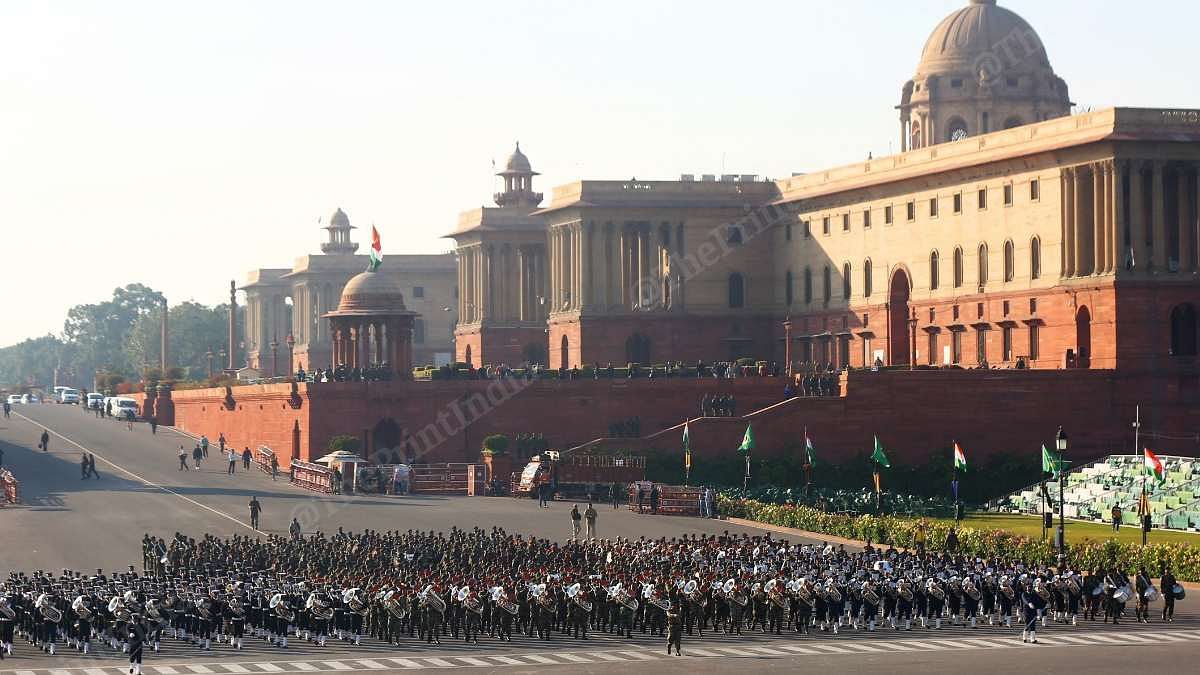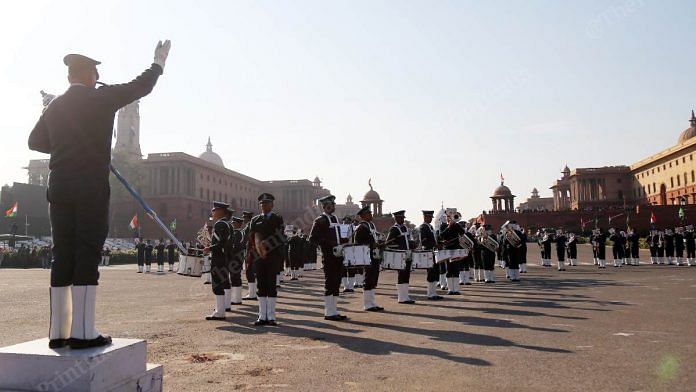New Delhi: The Vijay Chowk in the national capital of India is set to witness the annual military musical performance Beating the Retreat Wednesday, officially marking the culmination of India’s four-day Republic Day celebrations.
Every year, military bands, pipes and drums bands from regimental centres and battalions participate in the ceremony. Besides, bands from the Indian Navy, Indian Air Force and Indian Army participate too, among others.
The ceremony, which is held on 29 January every year at the Raisina Hill complex, includes musical presentations by states’ police and Central Armed Police Forces (CAPF). It also features parade performances by the bands of the military forces in the country.
The massed military bands display synchronised march on tunes like Sare Jahan se Acha, Jai Bharat, Jai Janam Bhumi, among others.
Also read: RDay at Shaheen Bagh: Flag hoisted by ‘dadis’, Vemula mother; chants of Azadi, Jana Gana Mana
The India event
Beating the Retreat traces its origins in India to early 1950s, after the country became a republic.
Major G.A. Roberts, an officer from Grenadier battalion of the Indian Army, developed the ceremony of massed bands display. It has since been held annually as an official ceremony of the Republic Day celebrations, emerging as an event of national pride when the Colours and Standards are paraded.

History of Beating the Retreat
An old tradition, the military ceremony originally dates back to the 1690s, when James II — the King of England, Ireland and Scotland — gave a command to his troops.
He ordered the soldiers to beat drums and parade the streets to commemorate the end of a day at the battlefield and withdraw to the safety of camp at the sounding of the Retreat.
In its earlier days, the practice was called ‘watch setting’ and began at sunset by firing of a single round from the evening gun.
The ceremony has now given way to a more scintillating spectacle of music and military precision drill, formidable parades, celebratory gunfire and magnificent fireworks in Britain.
‘Abide With Me’ back on tracklist
Earlier in January, the defence ministry was reported to have removed Abide With Me, a 19th century Christian hymn, from the annual ceremony and replaced it with India’s national song Vande Mataram in a push for more ‘Indian tunes’.
The English hymn, believed to be Mahatma Gandhi’s personal favourite, was written by Scottish poet Henry Francis Lyte and composed by William Henry Monk. It traditionally concludes the annual 45-minute performance.
After strong criticism over the reported move to replace the Western tune played by brass bands, the defence ministry reportedly said the hymn has not been dropped.
This report has been updated to remove some inaccurate details about the 2020 programme.
Also read: PM Modi sticks to ‘safa’ tradition, wears saffron ‘bandhej’ print turban on Republic Day



